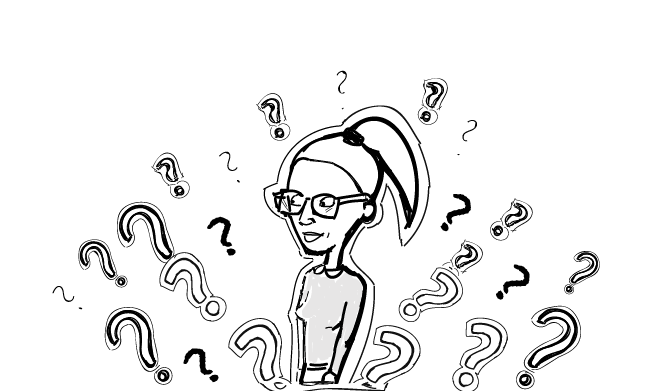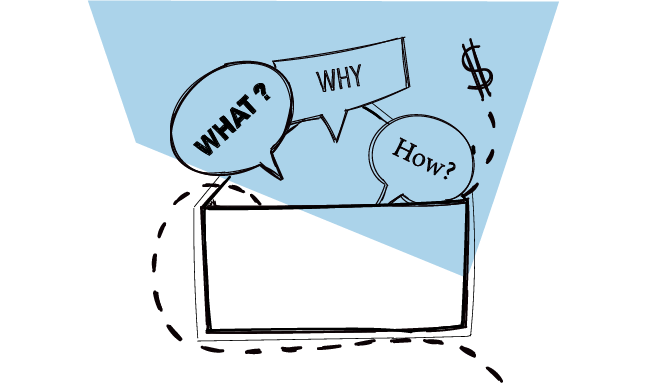What is the goal of a sales email? To close a deal? Yes, eventually. But first and foremost to gain your prospect’s trust and build a fruitful, long-lasting business relationship.
In real life, creating rapport between two strangers starts with a meaningful conversation. And the spark for dialogue is usually a spot-on and engaging question. It’s no different in outbound sales.
Asking high-value questions in sales emails is a skill to master. Let’s take a closer look at how to do it.
What questions to ask in a sales email?
Thinking in terms of starting a conversation, we can distinguish two basic types of questions a sales rep can ask: closed-ended questions and open-ended questions. What’s the difference between them and which type works better in sales emails?
What is a closed-ended question?
Close-ended questions lead to concrete answers, that usually can be squeezed in one word. They begin with “Do you…”, “Is…”, “Which” or “When”. They are great to get specific information, but not so much to get deeper insights and engage prospects into a dialogue.
What is an open-ended question?
An open-ended question, on the contrary, is a query that cannot be answered with a simple yes or no. It requires a bit more elaborate answer. Open-ended questions usually start with “how”, “what”, “why” or “could you tell me more about…” and give a lot of space for explanation. They are meant to start a dialogue and get to know a prospect’s point of view on some topic, discover their needs and pain points.
Therefore open-ended questions are much better conversation hooks you can use to engage prospects as well as learn more about them to understand your target group better.
What are some examples of open-ended questions in retail?
So how an open-ended question may look like? Let’s have a look at a few examples:
- What challenges do you have with X? How do you cope with them?
- How do you handle X in your team?
- How does your current X process work for you?
- What do you think about X in your team?
- What are your top priorities regarding X for this quarter?
- What do you think about this idea?
- I see your company is using X strategy for Y. What are your thoughts about it?
- What is most important to you in X process?
- What are you most focused on in your X process?
- What would you like to optimize in your current X process?
- What skill set could support your team in your current project?
- What do you find missing in your current X process?
- What do you think about having a quick chat about X?
Do you get the idea? Now let’s see how to come up with a similar question on your own.
What is the recipe for an open-ended question that will get you replies?
To spark a conversation an open-ended question needs to concern a topic that is relevant to the addressee. It should engage them in a dialogue with you. But, it cannot be neither too broad, nor too narrow. If it’s too general or too vague, a prospect may feel discouraged from devoting too much of their time to writing an answer. And if it’s too narrow, it may not give you much insight. Also, it must be logically connected with the rest of your email. It cannot just stand out randomly without any relation to what your message is about.
Let’s say you want to learn more about how the task management process looks like in your prospect’s team. If you formulate a question this way: “Do you find task management in your team effective?”, there’s a risk that you may get rather short and concise responses, like “Yes, I do” or “No, actually it could be better”. That doesn’t give you much insight, though.
Instead, you could reformulate this question into an open-ended one, like “What would you like to improve about task management in your team”? It leaves plenty of room for a substantial answer that will help you get a clearer picture of your prospect’s needs or pain points.
How to ask an open-ended question in a sales email?
Should you start your email with it? Smuggle it inside the copy? Or leave it for the end of your message? There’s no rule whatsoever. It seems most naturally to end your copy with an open-ended question, just like it usually is in a real-life conversation. Also, if you wrap up your message with a question, it’s more likely that the addressee will answer it on the spot.
Open-ended questions are only effective if there’s just one, maximum two of them in your copy. Even if there are two, the second one should support the first, rather than be an independent query. Posing too many questions sounds like an interrogation and really puts people off.
But what is most important about asking questions is… to listen to the answers. Pay attention to the responses. Develop the conversation further. Focus on building rapport. Use the insights to coin a value proposition of your product or service that will tick all the boxes for your prospects.
Common mistakes to avoid when asking questions in sales emails
Getting sales questions right is crucial for building rapport and moving prospects through the sales pipeline.
However, certain mistakes can derail the sales process. Here’s how to avoid these pitfalls to keep your sales conversations effective and focused.
1. Relying too much on closed-ended questions
Closed-ended sales questions often lead to short, one-word answers, making it difficult for sales reps to gather valuable information. Using closed-ended questions limits the opportunity for meaningful conversation and prevents potential customers from expressing their pain points.
Open-ended sales questions encourage prospects to share insights into their buying process and purchasing habits, which help build rapport and move them through the sales pipeline. To close deals, sales reps need to focus on open-ended questions rather than closed-ended ones.
2. Skipping follow-up questions
Asking a single question and moving on creates knowledge gaps in the sales process. Follow-up questions show that the sales rep is genuinely interested in the potential customer’s challenges
. A follow-up question based on a previous question keeps both parties on the same page, helping the conversation flow naturally. When sales reps miss the opportunity to dig deeper into the customer’s pain points, they miss out on valuable information that could make a difference in the decision-making process.
3. Overloading the prospect with too many questions
Filling an email with multiple sales questions can overwhelm a potential customer. A successful sales approach involves choosing one or two open-ended questions that focus on key pain points.
It shows that the sales rep respects the prospect’s time and is focused on building rapport. Asking too many questions makes the interaction feel more like an interrogation rather than a meaningful conversation, pushing the prospect away from the sales funnel.
4. Asking generic sales questions
Open-ended sales questions must be relevant to the potential customer and their specific situation. Generic questions make it seem like the sales rep is not genuinely interested in the customer’s unique pain points or business challenges.
To stand out, sales reps need to tailor their questions to the customer’s situation, using their own questions that align with the prospect’s goals and concerns.
5. Failing to incorporate the question into the sales call
In sales calls, the open-ended question needs to fit seamlessly into the conversation. Dropping a question without context makes it seem disconnected and forced.
Successful sales interactions require sales reps to listen actively and use the right questions at the right time. The goal is to build rapport, guide the prospect through the sales pipeline, and gather information that helps with closing deals.
Back to you
I’d like you to take a critical look at your email copy now. Are there any closed-ended questions that could be turned into open-ended ones? Maybe it’s just a matter of adding a follow-up question, that will encourage a prospect to elaborate more? If your email copy lacks any question, add one following the above guidelines but make sure it’s relevant and logically connected with the rest of your email copy.
READ ALSO

3 Resources that Will Help You Ask Better Questions
Sales articles are full of advice on how to skilfully ask questions during sales interview. That's not surprising. Questions are the exact thing that helps us move potential leads through the sales funnel. Cold callers use them during discovery calls and those who prospect might use questions while looking for the ICPs. But how to apply it to cold email senders who have just begun the conversation? Here I gathered 3 resources that will help you learn how to perfect the art of asking questions.

How to Write a Cold Email that Actually Works in 6 Steps (2025)
To get replies, a cold email has to be short yet powerful, and intriguing. That's why each part of this short message has to bear meaning and play a crucial communicative role. Check if you know these 6 tremendously important steps to write a cold email for sales that works.

What to Write in an Opening Message to Ace Cold Outreach
This is the blog post for cold email newbies. Or those of you who want to try something new with email outreach but lack inspiration. I'd like to propose that we rethink the ways of writing an opening message.

